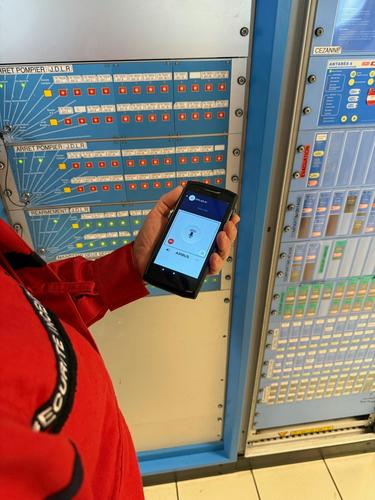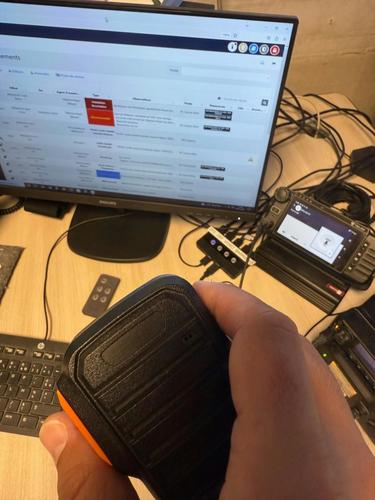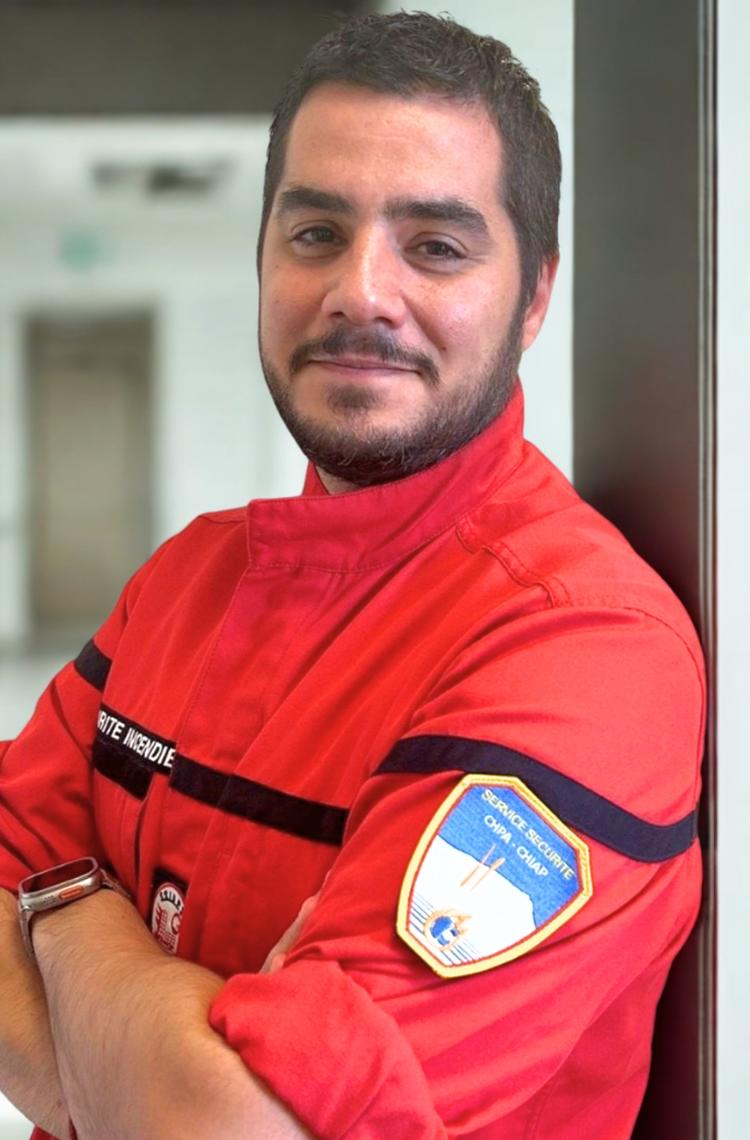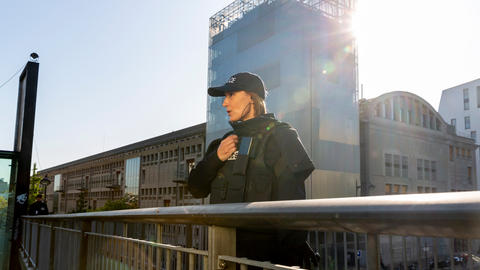No doubt about it – there’s a ‘before and after’ Agnet !
Interview with Christopher Cilia, head of fire, safety and security for the Pays d’Aix hospital (CH d’Aix en Provence) in France. Christopher selected Agnet, the communication and collaboration solution by Airbus Public Safety and Security (PSS) for the control station and around 50 internal and contracted officers for fire, safety and security and prevention on the sites he oversees from Aix en Provence to Pertuis. Christopher and his team protect people and goods, including from fire risks, and coordinate safety operations, particularly in crisis situations. They also ensure compliance with regulations, interface with police and emergency services, and work to continuously improve the service. Christopher benefits from around 20 years of experience as a firefighter and worked with Tetrapol technology on the PSS ANTARES network.
Airbus Public Safety and Security: Tell us about the communication solutions your team used before. Were there any particular limitations or difficulties?
Christopher Cilia: Before, we used traditional communication solutions – numeric and analogue telephones, DECT, a numeric radio system, and GSMs, but less frequently. It was far from ideal for managing multiple sites, particularly in the event of a crisis. Communication between different devices, and between people in the field and the control station was not always reliable. Transmitting critical information was slow sometimes, radios didn’t work everywhere, and the annex sites had no radio service for communicating with the main site. Also, we didn’t have any communication records for analysing incidents and our security officers had to use several different communication devices (DECT, radio and mobile phones) to be sure they could be contacted when doing their rounds. The aim was to reduce the number of devices serving the same purpose, and to improve our communication system overall for the team and for our regular exercises with firefighters.
Airbus: Why did you choose Agnet by Airbus? And how will it be used on a daily basis?
C.C: As part of preparation for the 2024 JO and Paralympics in Paris, we reviewed how we were organised for crisis management. It was also the chance to anticipate future fire regulations we learn about in our continuous technical and regulation intelligence. Not to mention that the police and emergency services are currently deploying the new radio network, Réseau Radio du Futur (RRF), and we communicate with them constantly. We had the choice between extending the cover of our numeric radio systems to all the annex sites or to switch to another system compatible with mobile phones using the same version of the AniKit application we already used for the electronic log. We conducted a benchmark study that indicated Agnet was the best solution for our needs. With an instant messaging service, Lone Worker Protection (LWP) and video streaming functions, the application solved our existing operational problems and anticipates communication needs between the hospital, police and emergency services. We also wanted an interface between the Anikit electronic log and the telephone system.
Our security officers now use Agnet every day, for their rounds and incidents. For example, we had to activate a crisis management cell during a weekend in April. I was quickly connected to my teams and the head security officer in the control centre so I could manage the crisis remotely until I arrived on site. It’s a perfect example of why the Agnet solution is exactly what we need. We can coordinate the teams in the field where the solution is highly operational. During the crisis in April, the control station sent officers to make their rounds on site and were able to understand exactly what was happening using video streaming to oversee operations. With Agnet, we can also send targeted alerts using the talk group function, with no limits to how many we can create.
Overall, Agnet provides us with a very reliable communication system.

Airbus: How would you describe life before and after Agnet for your team in terms of efficiency and productivity?
C.C: No doubt about it – there’s a ‘before and after’ Agnet! Decision-making and giving specific directions to the teams is quicker, particularly remotely. We use video streaming to work closely with the teams in the field where they can be managing situations such as an aggression or a fire. Coordination is smoother between the control station and security officers, including on the satellite sites because we can count on a reliable communications system with better security. This also relieves stress for the security officers in the field. They aren’t left to their own devices when managing an incident because they can be localised immediately and supported remotely using the streaming function. The new system also optimises resources, reducing superfluous trips and repetitive actions.
The team appreciates the advantages of the new system which solves many operational problems. No more carrying around multiple devices. Everything they need – to communicate, the electronic log and lone worker protection – is on the same mobile phone. They all agree that the range of functions in the new communication system – compared with a radio service for example, provides better working conditions and is more efficient for managing incidents. Not to mention the ambient listening system and video streaming at the control station where staff have a better idea of the complexity of the situation in the field. Ultimately, everyone appreciates a system that can help officers in difficult situations.
Airbus: How did the switch to the new technology go and how would you describe the service provided by Airbus?
C.C: I worked with Airbus for the deployment then I presented it in the field and delivered training for both internal and contract teams.
I appreciated that an Airbus representative came on site to the hospital here in Aix as soon as we began preparing for deployment. It was a great help having them here with me for the configuration stage and setting up all the phones. That said, it’s a simple solution to use, even to configure on your own, which shows it was carefully designed from the outset.
Programming the system is another story: creating talk groups, setting up the system from the start. I drew on my experience as a firefighter and created separate channels ahead of time, for example, for command on one hand, and for operations on the other. Here at Aix hospital, talk groups by officer have different priority levels: there are groups for daily field operations and others for crisis situations. I think essential to help people at my level when setting up their communications system.
Some of our officers were reticent about changing the system, generally because they were used to the radio. But they were reassured because Agnet is used on professional rugged phones, making it similar to working with a radio, with buttons that can be configured. It feels similar to working with a radio and that helped to win them over.
My presentation to the teams about the range of Agnet functions was also a trump card. There are situations when it’s not possible to make a call, like when you’re dealing with an aggressive person. That’s where Agnet is an advantage because you can send messages or stream video to the control station or activate ambient listening, which reassures the officers and improves their working conditions. Now, they are trying new functions and it saves them time. They’re very satisfied with the change to Agnet because they can see that everything is easier than before.

Airbus: Do you think Agnet could be adapted to other uses in your organisation?
C.C: Agnet could be useful for other departments, such as logistics, for optimising technical operations, and managing on-call services.
And for crisis management, when phones running Agnet could be provided to senior management, and to help coordinate services when the hospital is under pressure, for example during the summer.
Agnet might also be useful for IT department for improving coordination during major downtime and cyberattacks.
Airbus: Are they any functions that you and your team would like to add to the system? Do you have any suggestions for improving Agnet?
C.C: We are already developing functions with the provider of our electronic log. The aim is better integration with Agnet so that when security officers start their shift on the AniKit application, it’s transferred to Agnet users. We also want SOS or PTI alerts sent to AniKit for establishing incident reports with information about the initiator, receiver, location and call duration.
We could also work on closer integration between Agnet and our security systems, for example for transfer of fire alarms and CTM issues.
It might also be interesting to be able to create groups for crisis management according to specific scenarios.
Meanwhile, Agnet is already a very comprehensive and reliable solution that hasn’t let us down once so far!

